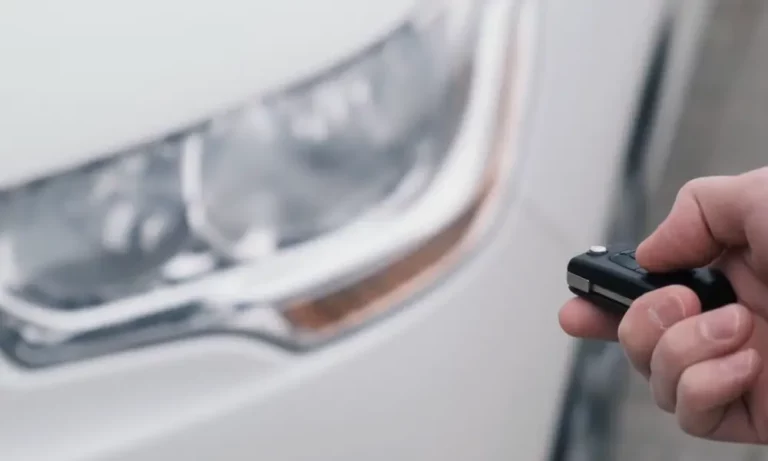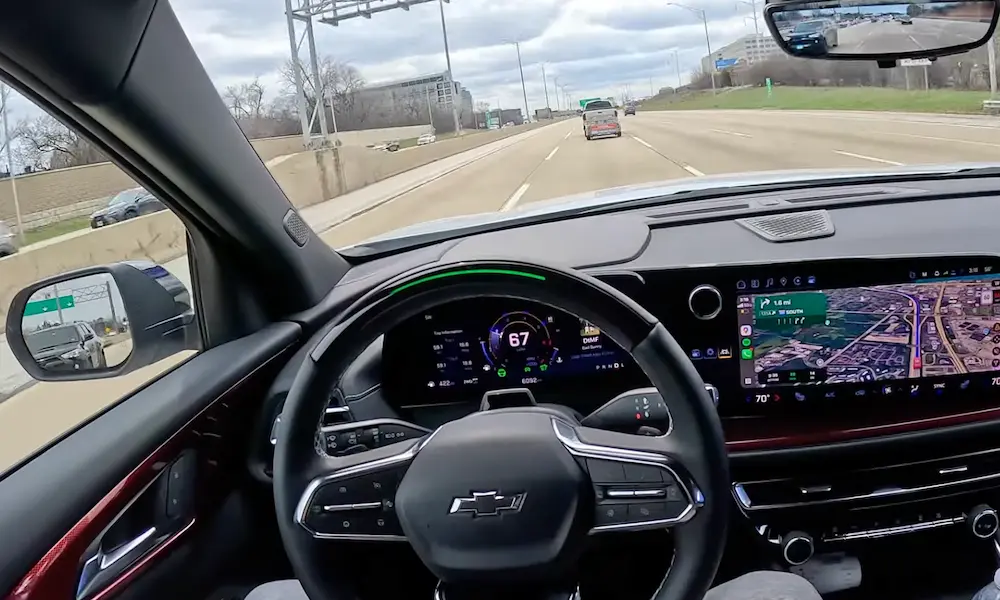Got a Chevy that won’t start because the anti-theft system is acting up? You’re looking at a frustrating but fixable problem. The right reset method can get you back on the road without an expensive trip to the dealership. This guide walks you through proven solutions for when your Chevy’s theft deterrent system locks you out of your own vehicle.
What Is a Chevy Theft Deterrent System?
Chevrolet’s theft deterrent systems are designed to protect your vehicle from unauthorized use. When working properly, they’re your car’s best defense against theft. But when they malfunction, these same systems can prevent your legitimate key from starting your vehicle.
Chevy has used several anti-theft technologies over the years:
VATS (Vehicle Anti-Theft System) and Passkey/Passkey II: These older systems use keys with special resistive chips. The system reads the resistance value to verify it’s an authorized key.
Passlock: Instead of a key chip, this system uses a coded lock cylinder that sends a specific code to the body control module when the correct key is used.
Passkey III: A more advanced system using a wireless transponder embedded in the key that communicates with your vehicle’s security system.
How to Tell If Your Anti-Theft System Is Activated
Your Chevy’s theft deterrent system has likely been triggered if you notice:
- A flashing or solid security/theft light on your dashboard
- Your engine cranks but won’t start
- The vehicle won’t crank at all
- A dashboard light showing a car with a lock is illuminated
Method 1: The Key Cycle Reset Technique
This simple method works for many Chevy models and should be your first attempt:
- Insert your key into the ignition
- Turn the key to the “On” position (where accessories work but the engine isn’t started)
- Leave the key in this position for 10-15 minutes until the security light stops flashing
- Turn the key back to “Off,” then try starting your vehicle
For stubborn systems, you might need to repeat this cycle 2-3 times. Be patient—this method often works but requires waiting the full time period during each attempt.
Method 2: The Door Lock Technique
This method is especially effective for Silverados (2014-2019) and other models with key fobs:
- Make sure your truck is locked
- Take the physical key (often hidden inside your key fob)
- Insert the key into the driver’s door lock
- Unlock the door using the key
- Lock the door using the key
- Unlock the door again
- Get in and try starting your vehicle
This technique works by resetting the door lock communication with the anti-theft module.
Method 3: The Fuse Removal Method
If the previous methods don’t work, try this approach:
- Find your vehicle’s alarm system fuse (check your owner’s manual for location—for 2014-2019 Silverados, it’s fuse #26)
- Remove this fuse for approximately 30 minutes
- Reinstall the fuse and try starting your vehicle
By removing the power source to the security system, you give it a chance to reset completely.
Method 4: Battery Disconnect Reset
This is the most comprehensive reset method and will clear not just the anti-theft system but most electrical systems in your vehicle:
- Disconnect the negative terminal from your car’s battery
- Wait at least 30 minutes (an hour is better for a complete reset)
- Reconnect the battery and attempt to start your vehicle
This nuclear option forces all systems to reboot and often resolves even stubborn anti-theft issues.
Model-Specific Reset Procedures for Chevy Vehicles
Silverado Reset (2014-2019)
For these popular trucks:
- Check fuse #26 first—problems with this fuse commonly trigger the theft system
- Try the door lock method described above, which is particularly effective for Silverados
- If unsuccessful, disconnect the battery for at least 30 minutes
Passlock System Reset Procedure
If your vehicle uses the Passlock system, follow this precise timing sequence:
- Turn the ignition to ON (don’t start)
- Wait exactly 11 minutes
- Turn ignition OFF for 30 seconds
- Repeat steps 1-3 two more times (total of 3 cycles)
- After the third cycle, turn ignition ON for 30 seconds, then OFF
- Try starting the engine
The exact timing is crucial here—follow it precisely for the best chance of success.
Older Chevy Models (Early 2000s)
For models from the early 2000s like the Chevy Classic:
- Try the 10-minute key cycle method first
- Some owners report success by pressing the power lock buttons or toggling the radio power while performing the reset
- For particularly difficult cases, disconnect the battery for at least 15 minutes
Preventing Future Anti-Theft System Problems
Keep Your Key Fob Healthy
Low batteries in your key fob can cause communication problems with your vehicle’s security system. Replace the batteries in your key fob every 1-2 years to prevent issues.
Maintain Clean Connections
Dirt and debris in your ignition cylinder can interfere with the security system’s ability to recognize your key. Keeping these contact points clean helps prevent false triggers.
Monitor Your Vehicle Battery
A weak car battery can cause voltage fluctuations that trigger anti-theft system malfunctions. Regular battery checks can help prevent these issues.
The Chevrolet Anti-Theft System: A Technical Overview
Chevrolet’s anti-theft systems have evolved significantly over the years. Modern systems create an integrated web of security using:
- Key recognition technologies
- Body control modules
- Engine control modules
- Enhanced security algorithms
This table shows the evolution of Chevy’s security systems:
| System Type | Years Used | Key Features | Reset Difficulty |
|---|---|---|---|
| VATS | 1986-1996 | Resistor pellet in key | Moderate |
| Passkey I/II | 1997-2004 | Enhanced resistor technology | Moderate |
| Passlock | 1996-2005 | Coded lock cylinder | Easy-Moderate |
| Passkey III | 2005-present | Wireless transponder | Moderate-Difficult |
Why Anti-Theft Systems Sometimes Malfunction
Even well-designed security systems can experience false triggers. Common causes include:
- Electronic interference
- Low battery voltage
- Worn ignition components
- Damaged keys or key fobs
- Software glitches in the security module
Understanding these potential causes can help you identify and prevent future issues.
Professional Solutions for Persistent Problems
If none of the DIY reset methods work, you might need professional help:
- Dealership Service: Chevrolet dealerships have specialized diagnostic equipment for security system problems
- Key Reprogramming: Sometimes a complete key relearn procedure is necessary
- Security Module Replacement: In rare cases, the anti-theft module itself may need replacement
A qualified technician can diagnose whether your issue requires these more advanced solutions.
Common Questions About Chevy Theft Deterrent Systems
How long does a Chevy anti-theft reset take?
Most reset methods require 10-30 minutes to complete. The battery disconnect method needs at least 30-60 minutes for a full reset.
Will disconnecting the battery reset the anti-theft system?
Yes, disconnecting your battery for at least 30 minutes will typically reset the anti-theft system along with other vehicle electronics.
Can I drive my Chevy with the anti-theft light on?
If the security light is solid (not flashing) and your car starts, you can drive it. However, you should address the underlying issue soon to prevent being stranded.
Why does my Chevy security light come on while driving?
A security light that illuminates while driving typically indicates a communication issue between your key and the security system. This often requires a diagnostic scan to identify the specific fault.
Advanced Anti-Theft Reset for Newer Chevrolet Models
Newer Chevy vehicles with advanced keyless entry systems sometimes require more specific procedures:
- Place your key fob extremely close to the start button (some models have a specific spot marked in the center console)
- Press the start button while holding the key in this position
- If successful, the vehicle will recognize the key and start normally
This method bypasses potential communication issues between the key fob and the vehicle’s receiver.
When to Seek Professional Help
While these DIY methods resolve most anti-theft system issues, some situations call for professional assistance:
- If your security light continues flashing after multiple reset attempts
- If you’ve recently replaced your ignition switch or key
- If you’ve had recent electrical work done on your vehicle
- If your vehicle has been in an accident that damaged electrical components
In these cases, the dealer’s specialized diagnostic equipment can identify the specific fault in your security system.
Chevy’s theft deterrent system provides valuable protection for your vehicle, but knowing how to reset it when problems occur can save you time, money, and frustration. By following the methods outlined in this guide, you’ll be prepared to handle anti-theft system issues quickly and get back on the road with minimal hassle.













